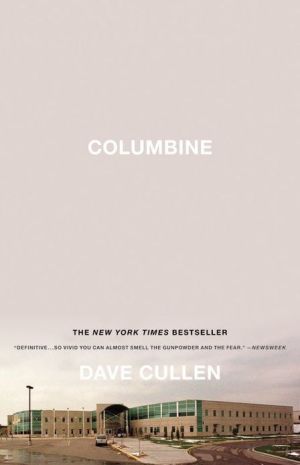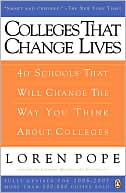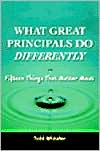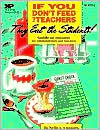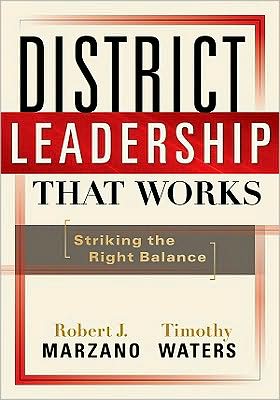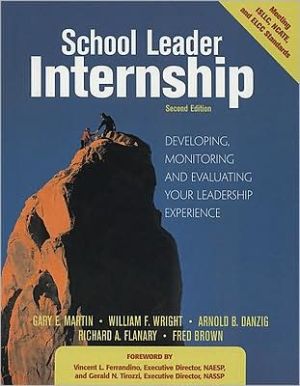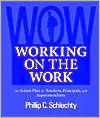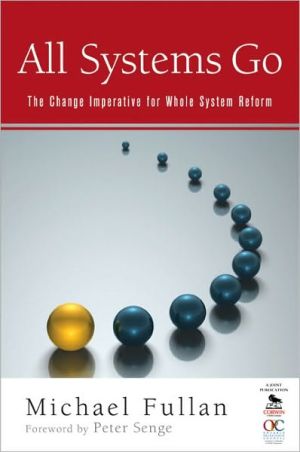Columbine
On April 20, 1999, two boys left an indelible stamp on the American psyche. Their goal was simple: to blow up their school, Oklahoma City-style, and to leave "a lasting impression on the world." Their bombs failed, but the ensuing shooting defined a new era of school violence, irrevocable branding every subsequent shooting "another columbine."\ When we think of Columbine, we think of the Trench Coat Mafia; we think of Cassie Bernall, the girl we thought professed her faith before she was...
Search in google:
On April 20, 1999, two boys left an indelible stamp on the American psyche. Their goal was simple: to blow up their school, Oklahoma City-style, and to leave "a lasting impression on the world." Their bombs failed, but the ensuing shooting defined a new era of school violence, irrevocable branding every subsequent shooting "another columbine." When we think of Columbine, we think of the Trench Coat Mafia; we think of Cassie Bernall, the girl we thought professed her faith before she was shot; and we think of the boy pulling himself out of a school window, the whole world was watching him. Now, in a riveting piece of journalism nearly ten years in the making, comes the story none of us knew. In this revelatory book, Dave Cullen has delivered a profile of teenage killers that goes to the heart of psychopathology. He lays bare the callous brutality of mastermind Eric Harris and the quavering, suicidal Dylan Klebold, who went to the prom three days earlier and obsessed about love in his journal. The result is an astonishing account of two good students with lots of friends, who were secretly stockpiling a basement cache of weapons, recording their raging hatred, and manipulating every adult who got in their way. They left signs everywhere, described by Cullen with a keen investigative eye and psychological acumen. Drawing on hundreds of interviews, thousands of pages of police files, FBI psychologists, and the boys' tapes and diaries, he gives the first complete account of the Columbine tragedy. The New York Times - Jennifer Senior It's to his credit that Cullen…makes the reader care about getting it right. Columbine is an excellent work of media criticism, showing how legends become truths through continual citation; a sensitive guide to the patterns of public grief, foreshadowing many of the same reactions to Sept. 11 (lawsuits, arguments about the memorial, voyeuristic bus tours); and, at the end of the day, a fine example of old-fashioned journalism. While Cullen's storytelling doesn't approach the novelistic beauty of In Cold Blood (an unfair standard, perhaps, but an unavoidable comparison for a murder story this detailed), he writes well enough, moving things along with agility and grace.
Columbine\ \ By Dave Cullen \ Grand Central Publishing\ Copyright © 2010 Dave Cullen\ All right reserved.\ ISBN: 978-0-446-54692-8 \ \ \ Chapter One\ Mr. D \ * * *\ He told them he loved them. Each and every one of them. He spoke without notes but chose his words carefully. Frank DeAngelis waited out the pom-pom routines, the academic awards, and the student-made videos. After an hour of revelry, the short, middle-aged man strode across the gleaming basketball court to address his student body. He took his time. He smiled as he passed the marching band, the cheerleaders, and the Rebels logo painted beneath flowing banners proclaiming recent sports victories. He faced two thousand hyped-up high school students in the wooden bleachers and they gave him their full attention. Then he told them how much they meant to him. How his heart would break to lose just one of them.\ It was a peculiar sentiment for an administrator to express to an assembly of teenagers. But Frank DeAngelis had been a coach longer than a principal, and he earnestly believed in motivation by candor. He had coached football and baseball for sixteen years, but he looked like a wrestler: compact body with the bearing of a Marine, but without the bluster. He tried to play down his coaching past, but he exuded it.\ You could hear the fear in his voice. He didn't try to hide it, and he didn't try to fight back the tears that welled up in his eyes. And he got away with it. Those kids could sniff out a phony with one whiff and convey displeasure with snickers and fumbling and an audible current of unrest. But they adored Mr. D. He could say almost anything to his students, precisely because he did. He didn't hold back, he didn't sugarcoat it, and he didn't dumb it down. On Friday morning, April 16, 1999, Principal Frank DeAngelis was an utterly transparent man.\ Every student in the gymnasium understood Mr. D's message. There were fewer than thirty-six hours until the junior-senior prom, meaning lots of drinking and lots of driving. Lecturing the kids would just provoke eye rolling, so instead he copped to three tragedies in his own life. His buddy from college had been killed in a motorcycle accident. "I can remember being in the waiting room, looking at his blood," he said. "So don't tell me it can't happen." He described holding his teenage daughter in his arms after her friend died in a flaming wreck. The hardest had been gathering the Columbine baseball team to tell them one of their buddies had lost control of his car. He choked up again. "I do not want to attend another memorial service."\ "Look to your left," he told them. "Look to your right." He instructed them to study the smiling faces and then close their eyes and imagine one of them gone. He told them to repeat after him: "I am a valued member of Columbine High School. And I'm not in this alone." That's when he told them he loved them, as he always did.\ "Open your eyes," he said. "I want to see each and every one of your bright, smiling faces again Monday morning."\ He paused. "When you're thinking about doing something that could get you in trouble, remember, I care about you," he said. "I love you, but remember, I want us all together. We are one large family, we are-"\ He left the phrase dangling. That was the students' signal. They leapt to their feet and yelled: "COL-um-BINE!"\ Ivory Moore, a dynamo of a teacher and a crowd rouser, ran out and yelled, "We are COL-um-BINE."\ COL-um-BINE!"\ It was louder now, and their fists were pumping in the air.\ "COL-um-BINE!"\ "COL-um-BINE!"\ "COL-um-BINE!"\ "COL-um-BINE!" Louder, faster, harder, faster-he whipped them into a frenzy. Then he let them go.\ They spilled into the hallways to wrap up one last day of classes. Just a few hours until the big weekend.\ * * *\ All two thousand students would return safely on Monday morning, after the prom. But the following afternoon, Tuesday, April 20, 1999, twenty-four of Mr. D's kids and faculty members would be loaded into ambulances and rushed to hospitals. Thirteen bodies would remain in the building and two more on the grounds. It would be the worst school shooting in American history-a characterization that would have appalled the boys just then finalizing their plans.\ (Continues...)\ \ \ \ \ Excerpted from Columbine by Dave Cullen Copyright © 2010 by Dave Cullen. Excerpted by permission.\ All rights reserved. No part of this excerpt may be reproduced or reprinted without permission in writing from the publisher.\ Excerpts are provided by Dial-A-Book Inc. solely for the personal use of visitors to this web site. \ \
I Female Down 1II After and Before 99III The Downward Spiral 171IV Take Back the School 237V Judgment Day 303Timeline: Before 359Acknowledgments 361Notes 363Bibliography 389Index 405
\ From Barnes & NobleBarnes & Noble Discover Great New Writers\ Columbine -- it used to represent a lovely blue flower that grows in the West. Sadly, it now has a different, much darker legacy of terrified students and of a pair of killers who did away with themselves before they could answer any of our questions. Columbine has also come to stand for a flawed response by the authorities, and has spurred a whole new protocol for combating school violence. But what do we really know about what happened? \ \ Way too little, according to Cullen, whose thrilling book was ten years in the making. And he should know. Cullen was on the scene from day one, and in the years since, has pored over hundreds of interviews, read 25,000 pages of evidence, and reviewed countless hours of video and audiotape. As a result, he's uniquely qualified to dispel many rumors that were reported as fact, and to offer a new explanation behind Harris and Klebold's deadly rampage. \ \ Were the two boys outcasts or Goths? Did they really target jocks or Christians? How much planning did they do, and did anyone help? Was the same motivation driving both of them? Cullen brings to light new truths central to the attacks in a book that should be required reading for anyone who wants to make sure no other high school suffers the fate of the one in Littleton, Colorado. (Summer 2009 Selection)\ \ \ \ \ CNNWhile tackling popular misconceptions, Cullen gives a riveting account of what happened that day and how the survivors view the event that marked their lives forever.\ \ \ Fort Worth Star-TelegramA staggering achievement, ...Rather than burden the deftly written prose with excessive footnotes, Cullen wisely includes a detailed timeline, bibliography and lengthy notes in the back of the book. The 417-page COLUMBINE tears open old wounds but does so with an aching, unflinching clarity that's only possible with hindsight . . . admirable, harrowing work . . . one of the finer nonfiction efforts thus far in 2009.\ \ \ \ \ New York MagazineWhat [Columbine] captures better than any other reporting is the confusion and fear that come from an inability to make sense of something that has no reason, no cause, no source-confusion and fear that can lead to damaging misinformation and lasting fictions.\ \ \ \ \ Seattle WeeklyComprehensively reported . . . Cullen scrupulously interpolates the interrupted lives of students, teachers, and lawmen.\ \ \ \ \ Jennifer SeniorIt's to his credit that Cullen…makes the reader care about getting it right. Columbine is an excellent work of media criticism, showing how legends become truths through continual citation; a sensitive guide to the patterns of public grief, foreshadowing many of the same reactions to Sept. 11 (lawsuits, arguments about the memorial, voyeuristic bus tours); and, at the end of the day, a fine example of old-fashioned journalism. While Cullen's storytelling doesn't approach the novelistic beauty of In Cold Blood (an unfair standard, perhaps, but an unavoidable comparison for a murder story this detailed), he writes well enough, moving things along with agility and grace.\ —The New York Times\ \ \ \ \ Publishers WeeklyIn this remarkable account of the April 20, 1999, Columbine High School shooting, journalist Cullen not only dispels several of the prevailing myths about the event but tackles the hardest question of all: why did it happen? Drawing on extensive interviews, police reports and his own reporting, Cullen meticulously pieces together what happened when 18-year-old Eric Harris and 17-year-old Dylan Klebold killed 13 people before turning their guns on themselves. The media spin was that specific students, namely jocks, were targeted and that Dylan and Eric were members of the Trench Coat Mafia. According to Cullen, they lived apparently normal lives, but under the surface lay "an angry, erratic depressive" (Klebold) and "a sadistic psychopath" (Harris), together forming a "combustible pair." They planned the massacre for a year, outlining their intentions for massive carnage in extensive journals and video diaries. Cullen expertly balances the psychological analysis-enhanced by several of the nation's leading experts on psychopathology-with an examination of the shooting's effects on survivors, victims' families and the Columbine community. Readers will come away from Cullen's unflinching account with a deeper understanding of what drove these boys to kill, even if the answers aren't easy to stomach. (Apr. 6)\ Copyright © Reed Business Information, a division of Reed Elsevier Inc. All rights reserved.\ \ \ \ \ Library JournalRelying on more than ten years of research, award-winning journalist Cullen (www.davecullen.com) here pieces together a stunning, authoritative, full-scope view of the Columbine tragedy, reaching powerful and controversial conclusions and revealing several facts previously unknown to the public. Don Leslie (The 48 Laws of Power) reads with both sensation and objectivity, escalating emotion during the often graphic diary passages and helping the story to flow. However, the narrative's continual jumping back and forth in time may confuse listeners. For Ann Rule and Jon Krakauer fans. [The Twelve: Hachette hc, a New York Times best seller, was recommended as "definitely worth reading despite the disjointed narrative," LJ 3/15/09.—Ed.]—Terry Ann Lawler, Phoenix P.L.\ \ \ \ \ Kirkus ReviewsComprehensive, myth-busting examination of the Colorado high-school massacre.."We remember Columbine as a pair of outcast Goths from the Trench Coat Mafia snapping and tearing through their high school hunting down jocks to settle a long-running feud. Almost none of that happened," writes Cullen, a Denver-based journalist who has spent the past ten years investigating the 1999 attack. In fact, Eric Harris and Dylan Klebold conceived of their act not as a targeted school shooting but as an elaborate three-part act of terrorism. First, propane bombs planted in the cafeteria would erupt during lunchtime, indiscriminately slaughtering hundreds of students. The killers, positioned outside the school's main entrance, would then mow down fleeing survivors. Finally, after the media and rescue workers had arrived, timed bombs in the killers' cars would explode, wiping out hundreds more. It was only when the bombs in the cafeteria failed to detonate that the killers entered the high school with sawed-off shotguns blazing. Drawing on a wealth of journals, videotapes, police reports and personal interviews, Cullen sketches multifaceted portraits of the killers and the surviving community. He portrays Harris as a calculating, egocentric psychopath, someone who labeled his journal "The Book of God" and harbored fantasies of exterminating the entire human race. In contrast, Klebold was a suicidal depressive, prone to fits of rage and extreme self-loathing. Together they forged a combustible and unequal alliance, with Harris channeling Klebold's frustration and anger into his sadistic plans. The unnerving narrative is too often undermined by the author's distracting tendency to weave the killers'expressions into his sentences—for example, "The boys were shooting off their pipe bombs by then, and, man, were those things badass." Cullen is better at depicting the attack's aftermath. Poignant sections devoted to the survivors probe the myriad ways that individuals cope with grief and struggle to interpret and make sense of tragedy..Carefully researched and chilling, if somewhat overwritten.\ \ \ \ \ Entertainment WeeklyFrom the very first page, I could not put COLUMBINE Dave Cullen's searing narrative, down. Dylan ... How the killings unfolded, and why, reads like the grisliest of fiction. Would that it were not true. Grade: A\ \ \ \ \ EsquireLeveraged for political ends by Michael Moore on film and adopted for convenience by the news media as shorthand for teenage violence, Columbine has begun to feel as impenetrable and allegorical as Greek myth. So the intensive reporting of Denver-based journalist Dave Cullen is welcome. . . Cullen creates more than a nuanced portrait of school shooters as young men. He writes a human story - a compassionate narrative of teenagers with guns (and bombs, too), and the havoc they wreak on a school, a community, and America.\ \ \ \ \ Charlotte ObserverCOLUMBINE is a remarkable achievement. Cullen has brought illumination to a dark and difficult topic, and the result is an example of literary nonfiction at its finest: masterful, clear-eyed, bold - and unforgettable.\ \ \ \ \ Cleveland Plain DealerCullen's book is a nerve-wracking, methodical and panoramic account...COLUMBINE has its terrifying sections, particularly during Cullen's minute-by-minute rendering of the chaotic 49-minute assault. He puts us inside and outside the building, and he captures the disbelief viewers experienced in 'almost witnessing mass murder' live on television.\ \ \ \ \ The New York ObserverA gripping study . . . To his credit, Mr. Cullen does not simply tear down Columbine's legends. He also convincingly explains what really sparked the murderous rage . . . disquieting . . . beautifully written.\ \ \ \ \ The Seattle TimesA remarkable book. It is painstakingly reported, well-organized and compellingly written . . . For any reader who wants to understand the complicated nature of evil, this book is a masterpiece.\ \ \ \ \ TimeComprehensively nightmarish . . . Cullen's task is difficult not only because the events in question are almost literally unspeakable but also because even as he tells the story of a massacre that took the lives of 15 people, including the killers, he has to untell the stories that have already been told . . . Should this story be told at all? There's an element of sick, voyeuristic fascination to it—we don't need an exercise in disaster porn. But Columbine is a necessary book. . . . The actual events of April 20, 1999, are exactly as appalling as you'd expect, and Cullen doesn't spare us a second of them.\ \ \ \ \ NewsdayWhile the details of the day are indeed gruesome, Cullen neither embellishes nor sensationalizes. His unadorned prose and staccato sections offer welcome relief from the grisly minutiae... Cullen's honor and reporting skills propel this book beyond tabloid and into true literature.\ \ \ \ \ NewsweekThe definitive account, [of the tragedy] will likely be Dave Cullen's COLUMBINE, a nonfiction book that has the pacing of an action movie and the complexity of a Shakespearean drama . . . Cullen has a gift, if that's the right word, for excruciating detail. At times the language is so vivid you can almost smell the gunpowder and the fear.\ \ \ \ \ SalonA chilling page-turner, a striking accomplishment given that Cullen's likely readers almost certainly know how the tragic story ends...I knew Cullen was a dogged reporter and a terrific writer, but even I was blown away by the pacing and story-telling he mastered in Columbine, a disturbing, inspiring work of art.\ \ \ \ \ Gary KristExhaustive and supremely level-headed . . . The ways in which the Columbine story became distorted in the retelling make for one of the most fascinating aspects of Cullen's book . . . Hopping back and forth in time, Cullen manages to tell this complicated story with remarkable clarity and coherence. As one of the first reporters on the scene in 1999, he has been studying this event firsthand for a decade, and his book exudes a sense of authority missing from much of the original media coverage. ...Cullen strikes just the right tone of tough-minded compassion, for the most part steering clear of melodrama, sermonizing and easy answers.\ — Washington Post\ \ \ \ \ Jennifer SeniorCOLUMBINE is an excellent work of media criticism, showing how legends become truths through continual citation; a sensitive guide to the patterns of public grief, foreshadowing many of the reactions to Sept. 11 (lawsuits, arguments about the memorial, voyeuristic bus tours); and, at the end of the day, a fine example of old fashioned journalism . . . moving things along with agility and grace.\ — The New York Times Review of Books\ \ \ \ \ LA TimesComprehensive...It's a book that hits you like a crime scene photo, a reminder of what journalism at its best is all about. Cullen knows his material from the inside; he covered Columbine, for Salon and Slate primarily, 'beginning around noon on the day of the attack.' But if this gives him a certain purchase on the story, his perspective is what resonates.\ \
